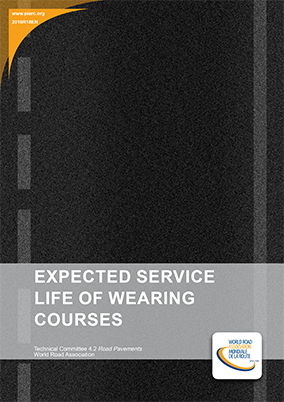Expected service life of wearing courses

As part of its 2012 to 2015 strategic plan the World Road Association (PIARC) determined the need to identify and review approaches taken in assessing the service life of wearing courses. This report reviews the different approaches taken by road authorities to determine the service life of wearing courses. The aim is to understand why they are replaced and identify the factors that affect decision-making.
The service life of a wearing course depends on several factors such as the type of wearing course, the amount of traffic, the climate and the base layer construction. The definition of service life can also vary from country to country. In this report we assume that any distress (e.g. roughness, rutting, and cracking) can be a determining factor to declare the end of life of a wearing course.
The survey is also restricted to "normal" roads. The wearing courses of special pavements, such as those used on bicycle paths, roundabouts, bridges, etc. can have a different behaviour and are not considered in this report. Only the service life of asphalt, concrete and pavements with surface dressings are considered.
The information presented in this report was collected using a questionnaire. This report describes the questionnaire, the responses to the questionnaire and a short analysis of the results. Finally, three case studies are added which go into more detail and describe different approaches to determine the end of service life.
Information sheet
- Date: 2016
- Author(s): Comité technique 4.2 Interaction route/véhicule / Technical Committee 4.2 Road/Vehicle Interaction
- Domain(s): Road Pavements
- Type: 2016R18EN - Technical Report
- PIARC Ref.: 2016R18EN
- ISBN: 978-2-84060-403-7
- Number of pages: 20